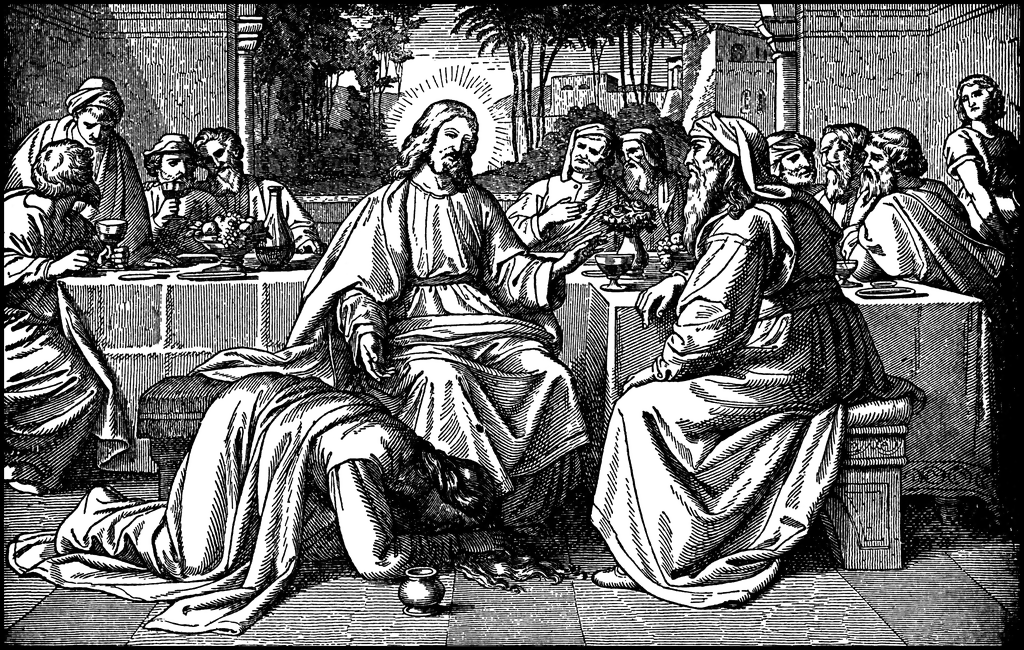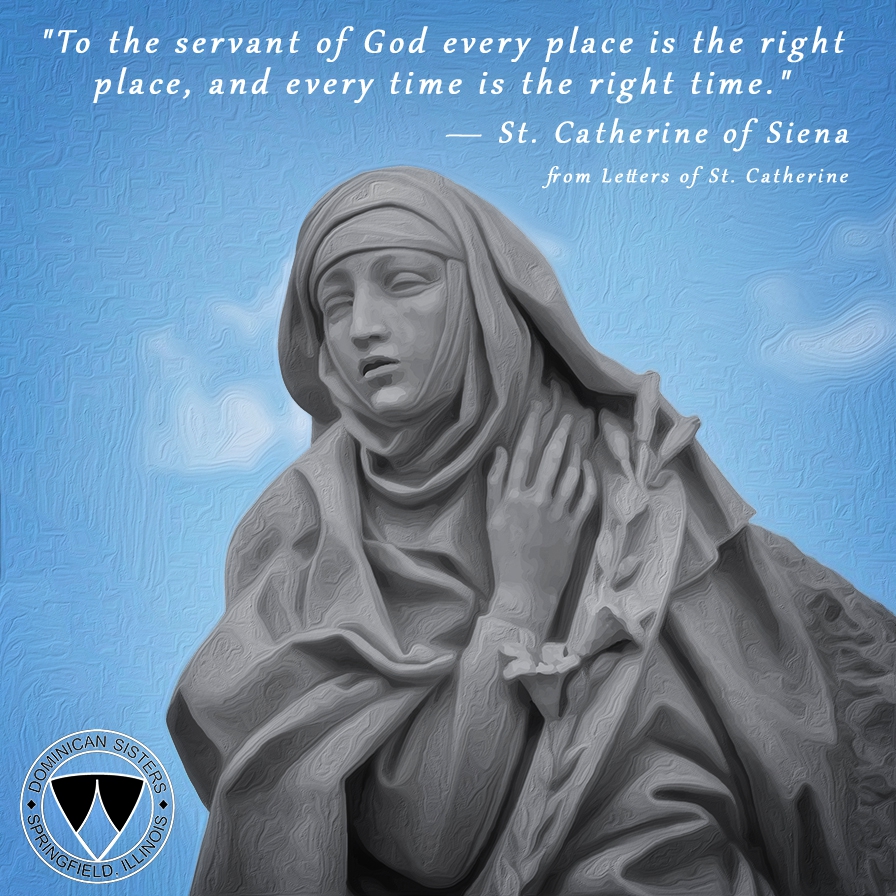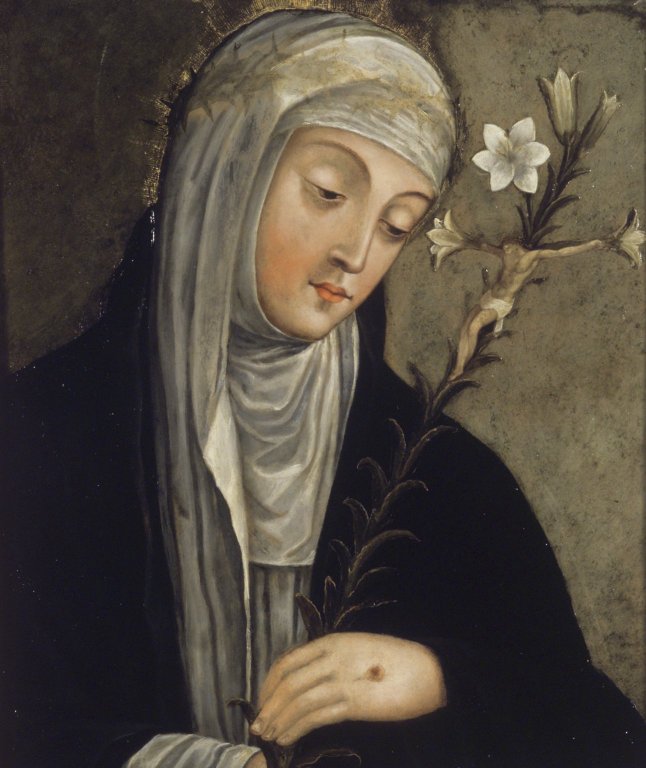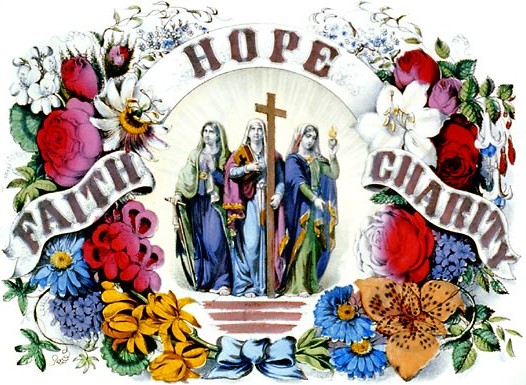
St Catherine of Siena

Befitting Tears
…first…the tears of wicked men of the world. These are the tears of damnation. The former are those of fear, and belong to men who abandon sin from fear of punishment, and weep for fear. The third are the tears of those who, having abandoned sin, are beginning to serve and taste Me, and weep for very sweetness; but since their love is imperfect, so also is their weeping, as I have told thee. The fourth are the tears of those who have arrived at the perfect love of their neighbor, loving Me without any regard whatsoever for themselves. These weep and their weeping is perfect. The fifth are joined to the fourth and are tears of sweetness let fall with great peace, as I will explain to thee. I will tell thee also of the tears of fire, without bodily tears of the eyes, which satisfy those who often would desire to weep and cannot. And I wish thee to know that all these various graces may exist in one soul, who, rising from fear and imperfect love, reaches perfect love in the unitive state. –The Dialogue of St. Catherine Of Siena: A Conversation with God on Living Your Spiritual Life to the Fullest
…the Middle Ages were saturated with tears: “their rivers of tears haven’t quite dried up even today, and whoever has an ear for pain can still hear their lamentations.” But how can we understand today exactly what those tears meant? They are not just about pain, for one thing. Along with tears of pain, medieval writers describe tears of penitence, of joy, of union with the divine. But the meaning or precise stimulus for tears is often difficult to trace. …revealing the tremendous diversity in the ways in which those who cry describe or explain this reaction. For Catherine, it is of utmost importance to do precisely this difficult work; her sophisticated typology of tears in the Dialogo is dedicated to separating out variously motivated tears…Catherine as author defines her mechanics of authorship in the terms of speech far more often than she describes herself as a writer. In both cases, tearful speech and tearful writing, weeping serves to authenticate words. In her essay “Stabat Mater,” Julia Kristeva suggests that milk and tears have this in common: “they are the metaphors of nonspeech, of a ‘semiotics’ that linguistic communication does not account for.” Milk and tears are the “privileged signs of” the Mater Dolorosa. Silently maternal, she listens, offering ear, tears, and breast. But this is not the only iconic example of weeping present to medieval people. Another key figure is the female sinner who washed Jesus’ feet with her tears and dried them with her hair, described in Luke. She “stood at his feet behind him weeping, and began to wash his feet with tears.” Jesus confirms the significance of her action: “Thou gavest me no water for my feet: but she hath washed my feet with tears.” While they are not “linguistic,” the woman’s tears speak her penitence and bring her into contact with Christ. In return for her love and humble service, she obtains forgiveness. These tears communicate for her. This female sinner is one component of Mary Magdalene, the “composite saint”…It seems safe to assume that this example would have informed Catherine’s ideas about the importance of tears… Heather Webb “Lacrime Cordiali: Catherine of Siena on the Value of Tears” from “A Companion to Catherine of Siena”


Consumed in Grace
A poem by Saint Catherine of Siena
I first saw God when I was a child, six years of age.
the cheeks of the sun were pale before Him,
and the earth acted as a shy
girl, like me.
Divine light entered my heart from His love
that did never fully wane,
though indeed, dear, I can understand how a person’s
faith can at time flicker,
for what is the mind to do
with something that becomes the mind’s ruin:
a God that consumes us
in His grace.
I have seen what you want;
it is there,
a Beloved of infinite
tenderness.


Praise and Glory
“Supreme and eternal good, who has moved You, infinite God, to illuminate me, Your finite creature, with the light of Your truth? You, the same fire of love, are the cause. For it is love that has always constrained and continues to constrain You to create us in Your image and likeness, and to show us mercy by giving immeasurable and infinite graces to Your rational creatures.
“Goodness above all goodness! You alone are supremely good, and nevertheless You gave the Word, Your only begotte
n Son, to associate with us filthy ones who are filled with darkness. What was the cause of this? Love. Because You loved us before we were.
“Eternal greatness! You made Yourself low and small to make mankind great. On whatever side I turn, I find nothing but the abyss and fire of Your love. And can a wretch like me pay back to You the graces and the burning love that You have shown and continue to show in particular to me, and the love that You show to all Your creatures? No, but You alone, most sweet and loving Father, will be thankful and grateful for me—that is, that the affection of Your charity itself will render You thanks. My being, and every further grace that You have bestowed upon me, I have from You. And You give them to me through love, and not as my due. –St Catherine of Siena ‘Little Talks With God’


Lover and beloved
Then the servant of God, as if actually intoxicated, seemed beside herself. It was as if the feelings of her body were alienated through the union of love that she had made with her Creator. And it was as if, in elevating her mind, she had gazed into the eternal truth with the eye if her intellect, and, having recognized the truth, had become deeply in love with it.
And she said, “Supreme one! You, supreme and eternal Father, have manifested to me your truth, the hidden deceits of the devil, and the deceitfulness of personal feelings. You have done this so that I, and others in this life of pilgrimage, may know how to avoid being deceived by the devil or ourselves! What moved you to do so? Love, because you loved me, without my having loved you.
“Fire of love! Thanks, thanks be to you, eternal Father! I am imperfect and full of darkness, and you, perfection and light, have shown to me perfection, and the resplendent way of the doctrine of your only-begotten Son.
“I was dead, and you have brought me to life. I was sick, and you have given me medicine. And yours was not only the medicine of the Blood that you gave for the diseased human race in the person of your Son, but also a medicine against a secret infirmity of which I was unaware. –St Catherine of Siena ‘Little Talks with God’


On fire
“I long to see you so totally ablaze with loving fire that you become one with gentle First truth. Truly the soul’s being united with and transformed into him is like fire consuming the dampness in logs. Once the logs are heated through and through, the fire burns and changes them into itself, giving them its own color and warmth and power.” –St Cathrine of Siena


A love unequaled
A call from the Hospice yesterday redefined priorities and established a schedule. There are eyes upon me at the Hospice and I like it. It is good for me in all aspects. The conclusion of the conversation produced a weekly routine of visiting the Jennings Center on a set day. Daily Mass is conducted at 9:30 AM, allowing attendance and then commiserating with assigned patients. I am coordinating schedules with Mary to allow her to accompany. The Easter gift complication made me realize our friendship is important to her on a level I did not comprehend. I am committed to assuring she is rewarded through our acquaintance. I recognize how important working with the elderly is to her. She is good at it. The patients adore her. One patient I have neglected due to her distance I have become focused upon. The last visit she sported a Rosary around her neck and a crucifix. I have concluded praying the Rosary with her is a must. We will sit in the gathering area as many of the patients in the Marian Gardens take interest when there is a visitor. The prayers will be shared with many. The affirmed structured commitment to the Jennings Center stimulates the desire to pursue becoming a Eucharist Minister. The retreat at home established a rootedness within my Hospice activities. There is no doubt it is where God is calling me at this time. I received serious attention and assistance from many when I struck my bottom in that hotel room in Toledo. It is time to give back. All for the glory of God and the salvation of souls.
Father Gerald Vann in ‘Divine Pity’ details dying to one’s self and the world within Jesus Christ not to be a renouncing and rejecting of the world, rather a deeper immersion into the world through faith, hope, and love. Father Vann utilizes Catherine of Siena as a loving example.
For it was Catherine who, after this ‘mystical death,’ became one of the most famous and the most powerful women of her century, endlessly active, Popes and princes, traveling, negotiating, issuing orders, determining policies, shaping the life of Christendom. What had intervened during her lengthy near death religious experience? She had learned the truth expressed in the words of the pseudo-Dionysius: Omnium divinorum divinissimum est cooperare Deo in salute animarum: of all divine things the most divine is to share with God in the saving of souls; she had begged Our Lord in ecstasy to take her back to her eternal home (to allow her to remain in death), and she had been reproached by Him—for her egoism. She had been taught by Him: “You cannot render me any service, but you can help your neighbor. The soul in love with My truth gives herself no rest but searches ceaselessly to help others. You cannot give back to Me Myself the love I demand, but I have put you beside your neighbor so that you may do for him which you cannot do for Me. What you do for your neighbor, then, I consider as being done for me.”



Recent Comments